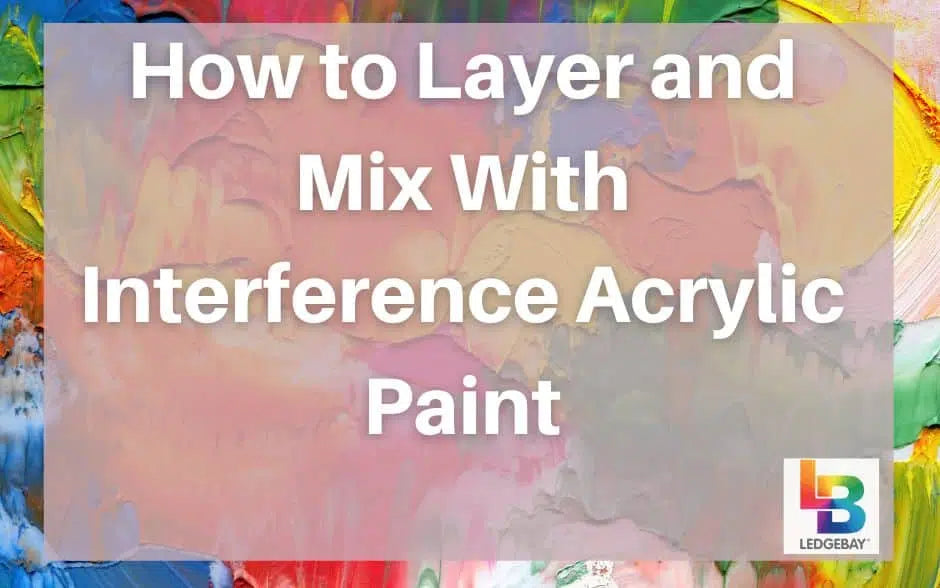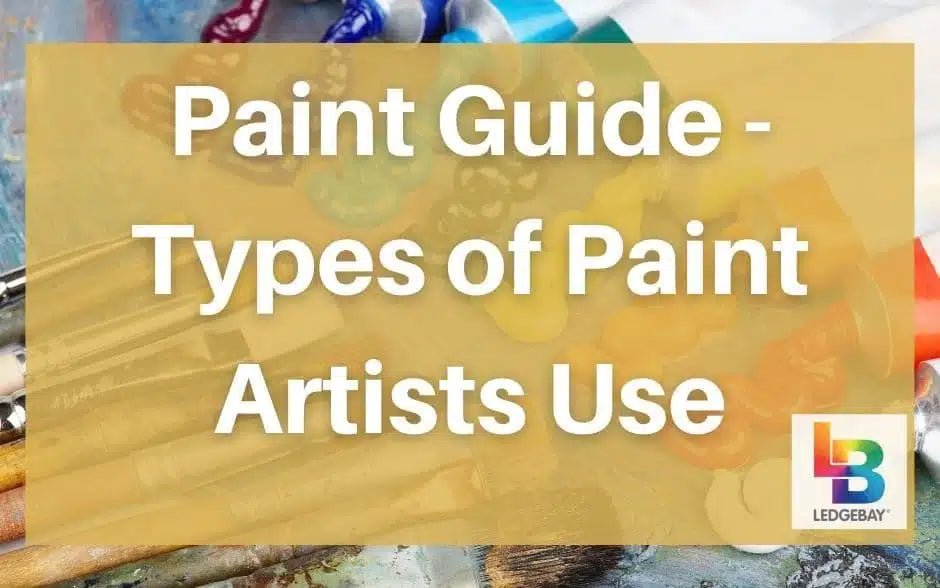EDITED AND FACT CHECKED BY: NATASHA TAYLOR
/wp:paragraph wp:paragraphHow does art therapy help mental health? Art therapy uses creative activities like painting and drawing to improve mental health by reducing stress, boosting self-esteem, and enhancing self-awareness. Hi, my name is Natasha Taylor, Senior Content Writer for Ledgebay. I’ve seen firsthand how engaging in art can transform lives.
/wp:paragraph wp:paragraphWhether you're dealing with anxiety, depression, or simply looking for a new way to express yourself, art therapy offers a powerful and creative path to healing. Ready to learn more? Keep reading to discover the incredible benefits of art therapy. For updates and more, follow us on Ledgebay.
/wp:paragraph wp:group {"metadata":{"name":"Key take aways"},"backgroundColor":"pale-cyan-blue","layout":{"type":"constrained"},"UAGDisplayConditions":"userstate"}How Does Art Therapy Help Mental Health Key Takeaways ?
- Art Therapy Definition: Art therapy uses creative activities like drawing, painting, and sculpting to improve mental health.
- Who Benefits: People of all ages, including children, teenagers, adults, and seniors, can benefit from art therapy.
- Mental Health Benefits: Art therapy helps reduce stress, anxiety, and depression, boosts self-esteem, enhances self-awareness, and improves social skills.
- Scientific Recognition: Art therapy is supported by research and recognized by the American Art Therapy Association.
- How It Works: Art therapy engages the mind, body, and spirit, providing alternative modes of communication and emotional expression.
- Session Expectations: In art therapy sessions, individuals engage in creative activities guided by a trained art therapist.
- Settings: Art therapy can take place in hospitals, clinics, schools, private practices, and community centers.
- Effectiveness: Regular sessions over time can lead to significant improvements in mental health.
- Getting Started: Find a qualified art therapist through directories or professional associations.
What Is Art Therapy and Its Importance?
/wp:heading wp:heading {"level":3}Introduction to Art Therapy: Definition, History, and Basic Principles
/wp:heading wp:paragraphArt therapy is a mental health profession that uses creative activities like drawing, painting, and sculpting to help people express themselves. It combines art-making with psychological theory to support mental and physical health. The formal practice of art therapy began in the mid-20th century. British artist Adrian Hill coined the term "art therapy" in 1942 when he noticed the benefits of painting and drawing while recovering from tuberculosis.
/wp:paragraph wp:paragraphAdditionally, art therapy is recognized by the American Art Therapy Association (AATA), which provides guidelines and standards for the practice. Art therapists are trained professionals who use art to help people cope with various mental health issues.
/wp:paragraph wp:headingArt Therapy is a Scientifically Recognized Form of Therapy
/wp:heading wp:heading {"level":3}Mechanisms of Art Therapy: How Art Therapy Works on a Psychological and Physiological Level
/wp:heading wp:paragraphArt therapy works by engaging the mind, body, and spirit in ways that verbal communication alone cannot. It uses kinesthetic, sensory, perceptual, and symbolic opportunities to invite alternative modes of communication. This can help people express emotions and experiences that are difficult to articulate with words.
/wp:paragraph wp:heading {"level":3}Scientific Evidence: Studies and Research Supporting the Effectiveness of Art Therapy
/wp:heading wp:paragraphResearch shows that art therapy can improve cognitive and sensorimotor functions, foster self-esteem and self-awareness, and cultivate emotional resilience. It also promotes insight, enhances social skills, and reduces conflicts and distress. Studies have shown that art therapy can significantly reduce symptoms of depression and anxiety, improve social function, and promote recovery in individuals with mental health disorders.
/wp:paragraph wp:headingWhat are the Benefits of Art Therapy?
/wp:heading wp:heading {"level":3}Benefits of Art Therapy: Specific Mental Health Benefits and Conditions It Can Help
/wp:heading wp:paragraphArt therapy offers numerous benefits for mental health, including:
/wp:paragraph wp:list- Reducing Stress, Anxiety, and Depression: Art therapy provides a creative outlet for emotions, which can help reduce stress and alleviate symptoms of anxiety and depression.
- Boosting Self-Esteem and Confidence: Completing an art project can give a sense of accomplishment and improve self-worth.
- Enhancing Self-Awareness: Creating art helps individuals understand themselves better, leading to personal growth and self-discovery.
- Improving Social Skills: Group art therapy sessions can help individuals connect with others, reducing feelings of isolation.
Art therapy can help with various conditions, including mental health disorders, anxiety disorders, mood disorders, substance use disorders, and cognitive impairment.
/wp:paragraph wp:heading {"level":3}Types of Art Therapy: Different Approaches and Techniques Used in Art Therapy
/wp:heading wp:paragraphThere are several approaches and techniques in art therapy, including:
/wp:paragraph wp:list- Painting and Drawing: Using different art materials to express emotions and thoughts.
- Sculpting: Creating three-dimensional art to explore feelings and experiences.
- Collage Making: Combining various materials to create a visual representation of emotions.
- Digital Art: Using technology to create and manipulate images.
Each technique offers unique benefits and can be tailored to meet the needs of the individual.
/wp:paragraph wp:paragraph {"backgroundColor":"ast-global-color-4"}For a full academic study on how does art therapy help mental health, check out this list of resources:
/wp:paragraph wp:group {"backgroundColor":"ast-global-color-4","layout":{"type":"flex","flexWrap":"nowrap"}}Citations:
Where to Buy the Best Paint By Number Kits for Art Therapy:
/wp:heading wp:group {"backgroundColor":"ast-global-color-4","layout":{"type":"flex","orientation":"vertical"}}MY EXPERT RECOMMENDATIONS
I have tested quite a few paint by number kits throughout my career. But in my EXPERT OPINION, nothing would ever compare to how simple yet therapeutic Ledgebay products are. They are DURABLE, FUN, and can be done by ANYONE and at ANY AGE. I would highly recommend trying out these products that have been proven to be highly effective for relieving stress and anxiety!
GET THEM ON AMAZON TOO!
How to Begin Art Therapy
/wp:heading wp:heading {"level":3}How to Get Started: Guidance on Finding a Qualified Art Therapist and What to Expect in Sessions
/wp:heading wp:paragraphTo start art therapy, look for a qualified art therapist. They should have a master's degree and be certified by the American Art Therapy Association. You can find a directory of certified art therapists online.
/wp:paragraph wp:heading {"level":3}What to Expect During an Art Therapy Session
/wp:heading wp:paragraphIn an art therapy session, you'll engage in various creative activities like drawing, painting, or sculpting. The therapist will guide you through the process and help you explore your emotions. Sessions typically take place in private rooms, community centers, hospitals, or online.
/wp:paragraph wp:headingWhere Does Art Therapy Take Place?
/wp:heading wp:paragraphArt therapy can take place in various settings, including:
/wp:paragraph wp:list- Hospitals
- Clinics
- Schools
- Private practices
- Community centers
These settings provide a safe and supportive environment for individuals to engage in the creative process.
/wp:paragraph wp:headingWho is Right for Art Therapy?
/wp:heading wp:heading {"level":3}Children: Benefits and Considerations for Children in Art Therapy
/wp:heading wp:paragraphChildren can benefit from art therapy by expressing emotions and improving behavior. It can help children with autism, behavioral challenges, and those who have experienced trauma.
/wp:paragraph wp:heading {"level":3}Teenagers: Benefits and Considerations for Teenagers in Art Therapy
/wp:heading wp:paragraphTeenagers can use art therapy to cope with stress, develop emotional resilience, and improve self-awareness. It is particularly beneficial for those dealing with anxiety disorders and depression.
/wp:paragraph wp:heading {"level":3}Adults: Benefits and Considerations for Adults in Art Therapy
/wp:heading wp:paragraphAdults can manage mental health problems like anxiety, depression, and trauma through art therapy. It helps in expressing emotions, reducing stress, and improving overall mental well-being.
/wp:paragraph wp:heading {"level":3}Seniors: Benefits and Considerations for Seniors in Art Therapy
/wp:heading wp:paragraphSeniors can enhance cognitive functions and reduce feelings of loneliness with art therapy. It is beneficial for those dealing with cognitive decline, dementia, and other age-related issues.
/wp:paragraph wp:headingHow Long Does Art Therapy Take to Be Effective?
/wp:heading wp:paragraphThe duration and frequency of art therapy sessions can vary greatly depending on the individual's needs and goals. Some people may see benefits after a few sessions, while others may require ongoing therapy for several months. Research suggests that regular sessions over a period of time can lead to significant improvements in mental health.
/wp:paragraph wp:headingArt Therapy and Healing
/wp:heading wp:heading {"level":3}How Art Therapy Contributes to Overall Mental Health and Healing
/wp:heading wp:paragraphArt therapy contributes to overall mental health and healing by providing a safe space for individuals to express their emotions and experiences. It helps in processing trauma, reducing negative symptoms, and promoting emotional resilience. Testimonials and case studies demonstrate the healing power of art therapy for various mental health conditions.
/wp:paragraph wp:headingDo You Need Art Therapy? Try Out This Quiz and Assess for Yourself!
/wp:heading wp:html htmlDo You Need Art Therapy?
This quiz will help you determine if art therapy might be beneficial for you. Answer the following questions honestly to see if art therapy could help improve your mental health and well-being.
1. How Often Do You Feel Overwhelmed By Your Emotions?
2. Do You Find It Difficult To Express Your Feelings Verbally?
3. Have You Experienced Any Of The Following Recently? (Select All That Apply)
4. Do You Enjoy Creative Activities Like Drawing, Painting, Or Crafting?
5. How Often Do You Feel Isolated Or Disconnected From Others?
6. Are You Looking For New Ways To Cope With Stress Or Emotional Challenges?
7. Have You Ever Used Art As A Way To Relax Or Express Yourself?
8. Do You Have A History Of Mental Health Issues Such As Anxiety, Depression, Or PTSD?
9. Are You Open To Trying New Therapeutic Approaches To Improve Your Mental Health?
10. Do You Feel That Traditional Talk Therapy Has Not Fully Addressed Your Needs?
Results
FAQs❓
1. Who Can Benefit from Art Therapy?
Art therapy can benefit people of all ages, including children, teenagers, adults, and seniors. It is effective for those experiencing trauma, mental health disorders, physical illnesses, and those seeking personal growth.
2. Do I Need to Be Good at Art to Participate in Art Therapy?
No, you do not need any artistic skills or experience to participate in art therapy. The focus is on the process of creating art, not the final product.
3. What Should I Look for in an Art Therapist?
Look for an art therapist with proper credentials, such as a master's degree in art therapy and certification from a recognized board like the American Art Therapy Association. They should have experience relevant to your needs.
4. Can I Do Art Therapy on My Own?
While you can use art as a form of self-care, true art therapy should be guided by a trained professional who can help you navigate difficult emotions and experiences.
5. Is Art Therapy Confidential?
Yes, art therapy sessions are confidential. The artwork and discussions in sessions are private and will not be shared without your consent, except in cases where there is a risk of harm.
Wrapping Up: Your Next Steps
/wp:heading wp:list {"ordered":true}- Exploring Other Forms of Therapy: Learn about other therapies like cognitive-behavioral therapy (CBT) or mindfulness.
- Mental Health Resources: Find guides on managing mental health, self-help tips, or professional help.
- Creative Activities for Mental Health: Discover other creative activities that promote mental well-being.
Art therapy is a valuable tool for improving mental health. It helps people of all ages express emotions, reduce stress, and build self-esteem. Whether you're dealing with a mental illness or just looking to improve your mental well-being, art therapy can be a powerful and creative way to heal.
/wp:paragraph wp:headingRead More...
/wp:heading wp:paragraphIf you would like to know more information on how paint by numbers can improve your life, check out these other articles and get educated even more!
/wp:paragraph wp:embed {"url":"https://ledgebay.com/artwork-with-colored-pencils","type":"wp-embed","providerNameSlug":"ledgebay"}










